“Why [Latok I] again?” Thomas Huber asked in a recent post. “My climbing career started on the Latoks…What I saw there blew me away. Or in [American climber] Jim Donini’s words, ‘This is it! There are no better peaks and walls in the climbing world. This is the Mountain Cathedral.’ That is why.”
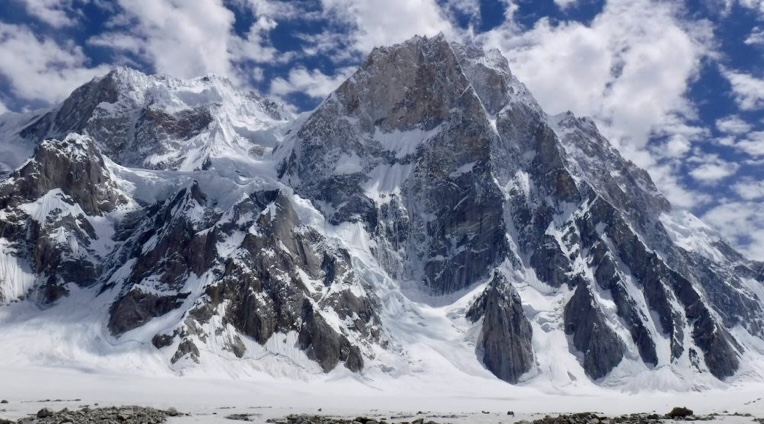
Latok I. Photo: Alexander Gukov
The Latok group of peaks lies in the Panmah Muztagh, part of the central Karakoram range in Pakistan. To the south is the Baintha Lukpar Glacier, a small tributary of the Biafo Glacier. On the north side is the Choktoi Glacier.
The Latok peaks include 7,145m Latok I, 7,108m Latok II, 6,949m Latok III, and 6,456m Latok IV. Latok II was climbed first, in 1977, then Latok I and Latok III in 1979, and finally Latok IV in 1980.
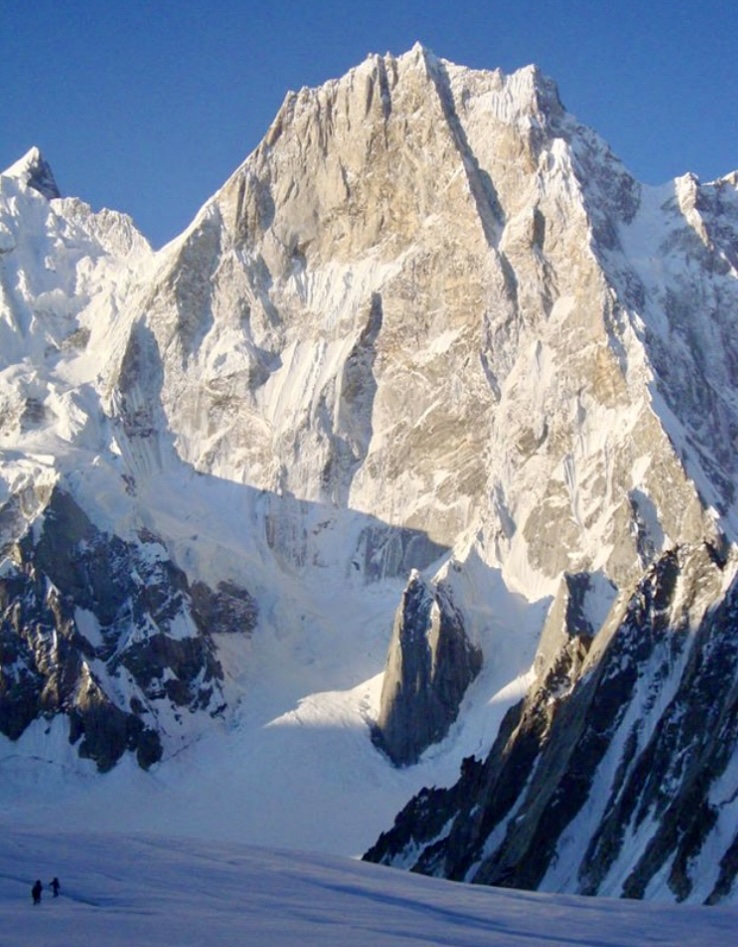
The north face and and north ridge of Latok I dwarf climbers Alex and Thomas Huber, below. left Photo: Thomas Huber
Early attempts on Latok I
Between July and September 1975, the Tokai section of the Japanese Alpine Club attempted Latok I. However, huge avalanches and rockfall persuaded them to give up and explore the nearby glaciers.
Led by Makoto Hara, the party went up the Biafo and Simgang. Crossing the Sim La, they had to descend a 458m ice wall to the Choktoi Glacier, before continuing along the Panmah to the Baltoro and finally back to Askole.
In the summer of 1976, another Japanese team attempted to climb the couloir between Latok I and III. Led by Yoshifumi Itatani, they reached 5,700m before turning around because of a serac fall.
An Italian team attempted Latok I in the summer of 1977, led by Arturo Bergamaschi. First, they scoped out the 1976 Japanese route, but the Italians considered it too dangerous because of continuous ice fall. Bergamaschi’s team instead turned to Latok II and topped out there.
All three attempts went to the southern side of Latok I, and all three turned back because of avalanche danger.

The American attempt in 1978 on Latok I’s north ridge. Photo: Michael Kennedy
The most important attempt
In 1978, an American party attempted Latok I via the steep, 2,400m north ridge. The team included Michael Kennedy, Jim Donini, George Lowe, and Jeff Lowe, accompanied to base camp by doctors George Lowe Sr. and Ralph Richards. The party climbed in lightweight alpine style.
“There is no easy way up the precipitous, ice-encrusted walls of this imposing mountain,” Kennedy wrote in the American Alpine Journal. “The easiest route would present the technical challenge of the hardest peaks in North America.”
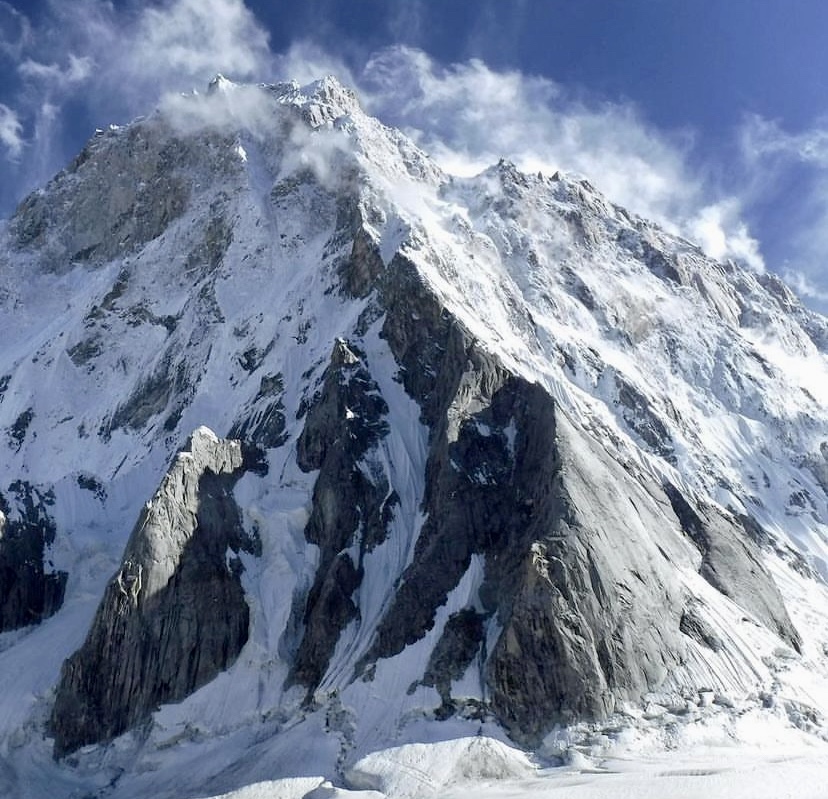
The north ridge of Latok I. Photo: Alexander Gukov
For the American party, the north ridge appeared to be perhaps the only route free of objective danger. However, they knew there was only a 50% chance of success. Starting in July, they spent 26 days on the north ridge and descended after reaching approximately 6,995m. Although they didn’t reach the top, their climb was widely admired. You can read their detailed report here.
The first ascent
In the summer of 1979, a Japanese team led by Naoki Takada finally made the first ascent of Latok I, via the south face. The route ascended the buttress left of the couloir that divides Latok I and Latok III.
Takada’s party established Base Camp on the Baintha Lukpar Glacier on June 10. They set up Camp I in the couloir at 5,500m on June 20, but the next day, an avalanche wiped it out. Two days later, they established a new Camp I high on the glacier at 5,052m.
At 5,792m, at the point they left the couloir for the steep rock buttress, they set up Camp 2. It took them eight days to fix the route from Camp 2 to Camp 3. This last Camp was established at 6,500m after a bivy.
On July 17, their first summit attempt failed. But two days later, on July 19, Tsuneo Shigehiro, Sin’e Matsumi, and Yu Watanabe struggled through bad snow for 13 hours to the summit. On July 22, Hideo Muto, Jun’ichi Oku, and Kota Endo also topped out.
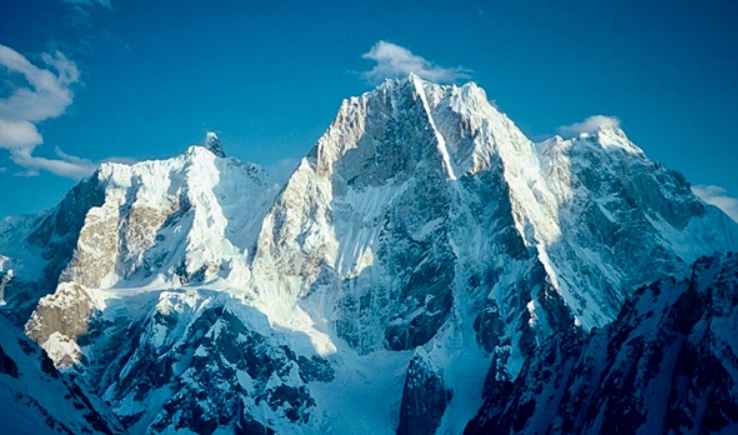
Latok I and its north ridge. Photo: Andy MacNae
Death on the north ridge
From 1982, there were a lot of attempts on Latok I, several of them via the north ridge. Yet no one succeeded again until 2018.
On July 31, 2018, a Russian duo attempted the north ridge, but their expedition ended in tragedy. Sergey Glazunov died and his partner Alexander Gukov was rescued by helicopter at 6,100m. A beautiful short film was made in homage to Glazunov.
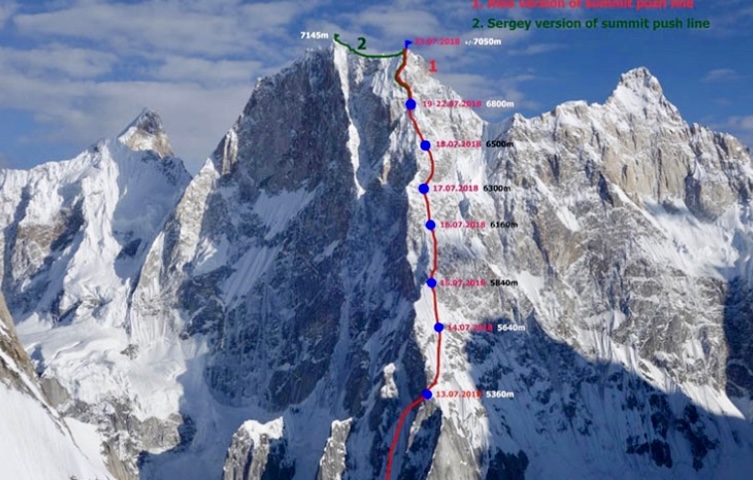
The Russian expedition in 2018. Photo: Sergey Glazunov for Mountain.ru
In the same summer, on August 9, an international party that included Ales Cesen, Luka Strazar, and Tom Livingstone made the second ascent of Latok I. The trio climbed three-quarters of the north ridge before traversing to the west face. Although they didn’t climb the entire north ridge, they were the first to climb the peak from the north, after more than 40 years of attempts.

The second successful ascent of Latok I in 2018. Photo: Tom Livingstone
Thomas Huber made his last attempt on the north ridge in 2019 with Simon Gietl and Yannick Boissenot. After a hiatus of some years, he returns this summer to Latok I.





